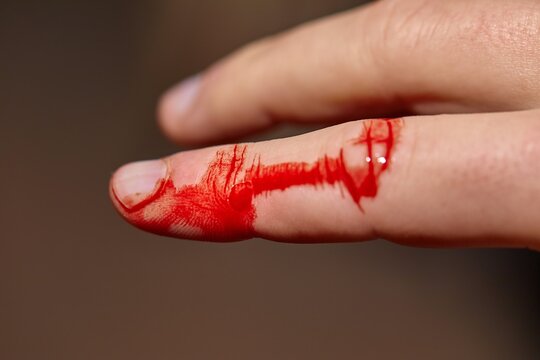Hand Cut: A Multifaceted Exploration

The phrase “hand cut” can evoke a variety of images and emotions, depending on the context. It can conjure up feelings of nostalgia, warmth, and tradition. Alternatively, it can represent danger, pain, and even violence. In this article, we will explore the various meanings and interpretations of “hand cut,” delving into its cultural significance, historical context, and modern-day applications.
From Traditional Crafts to Modern Techniques
Historically, “hand cut” has been synonymous with craftsmanship and meticulous attention to detail. In various cultures and throughout different eras, skilled artisans have employed hand-cutting techniques to create a vast array of objects, including:
- Clothing and textiles: Hand-cut garments, often adorned with intricate embroidery or embellishments, were once a mark of status and wealth.
- Furniture and woodworking: Masterful woodworkers meticulously hand-cut intricate designs and shapes, resulting in pieces of exceptional beauty and functionality.
- Jewelry and metalwork: Precious metals and gemstones were transformed into exquisite jewelry and decorative objects through the skillful use of hand-cutting tools.
- Food and culinary arts: Precise hand-cutting techniques are essential for preparing many traditional dishes, ensuring consistent shapes, sizes, and textures.
The Rise of Automation and the Value of Handmade
With the advent of the industrial revolution and the subsequent rise of mass production, hand-cutting techniques gradually gave way to automated processes. While these advancements led to increased efficiency and affordability, they also resulted in a homogenization of products and a loss of the unique character and individuality inherent in hand-crafted objects.
Despite the prevalence of automation, the value of hand-cutting persists. In today’s world, where mass-produced goods often lack personality and soul, hand-cut items offer a refreshing alternative. They are imbued with the touch of the maker, reflecting their skill, dedication, and creativity. As a result, hand-cut objects are often cherished for their inherent value and lasting quality.
Cultural and Artistic Significance
The practice of hand-cutting transcends its utilitarian purpose and holds significant cultural and artistic value. In many cultures, hand-cutting techniques are passed down through generations, serving as a vital thread that connects past and present. They represent a rich cultural heritage and embody the traditions and values of a community.
Furthermore, hand-cutting is often used as a form of artistic expression. Skilled artisans utilize hand-cutting tools to create breathtaking works of art, ranging from delicate papercuts to intricate wood sculptures. These artworks convey a depth of emotion and meaning that is often absent in mass-produced objects.
Modern-Day Applications and Future Potential
In the contemporary world, hand-cutting continues to be relevant in various fields. Here are a few examples:
- Food preparation: Chefs and home cooks alike employ hand-cutting techniques to ensure precise cuts and textures, enhancing the presentation and flavor of their dishes.
- Fashion and design: Hand-cut garments and accessories are highly sought after for their unique style and personalized touch.
- Crafts and hobbies: Hand-cutting is a fundamental skill in various crafts, such as woodworking, jewelry making, and paper crafting.
- Art and design: Artists and designers utilize hand-cutting techniques to create one-of-a-kind pieces, adding a personal touch to their work.
Looking ahead, hand-cutting has promising potential in the age of digital fabrication. As 3D printing technology becomes more accessible, hand-cutting can be used to create custom templates and molds, allowing for the creation of truly unique and personalized objects.
Beyond the Physical: The Emotional and Symbolic Impact
The concept of “hand cut” extends beyond the realm of physical objects and carries significant emotional and symbolic weight. It can represent:
- Care and attention: Hand-cutting requires meticulous care and attention to detail, reflecting the dedication and effort invested in the creation of an object.
- Uniqueness and individuality: No two hand-cut objects are ever identical, making each one unique and irreplaceable.
- Human connection: Hand-cut objects often carry the energy and touch of the maker, fostering a connection between the creator and the user.
- Sustainability and mindfulness: Hand-cutting promotes a slower, more mindful approach to production and consumption, encouraging a more sustainable relationship with our resources.
Conclusion
“Hand cut” is a multifaceted term with a rich history and a bright future. It represents a deep connection to the past, a dedication to craftsmanship, and a love for the unique and the individual. In a world increasingly dominated by technology and mass production, hand-cut objects stand out as a testament to human skill, creativity, and connection. As we move forward, let us continue to appreciate and celebrate the value of hand-cut objects, recognizing their inherent beauty, meaning, and enduring legacy.






